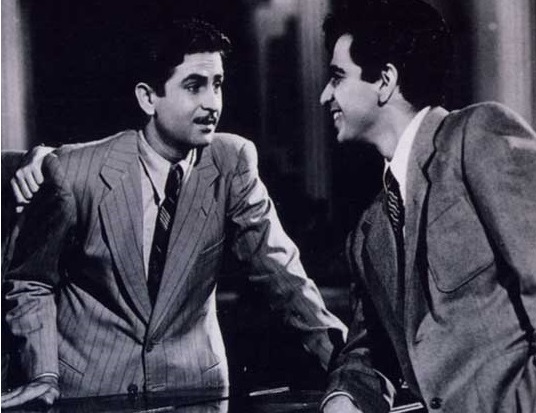
Tucked away near the centuries-old Storytellers’ Bazaar, the decaying Pakistani mansions once home to Bollywood superstars are being brought back to life in Peshawar.
The ancestral homes of Golden Age heroes Raj Kapoor and Dilip Kumar in the northwestern city are symbols of its link to the world’s largest film industry but have suffered from decades of neglect.
The region’s archaeology team says it is close to wresting the more than 100-year-old buildings, located in the heart of the historic walled city, from their private owners so they can be restored and turned into museums.
“I always feel sad and angry while looking at Kapoor’s house, that it once was a beautiful mansion of top quality,” said Samiuddin Khan, who remembers running through the 40-room abandoned house as a child and flying kites from the rooftop.
“It was extremely beautiful inside. The structure is still intact but some walls have collapsed and much of the wood has been damaged.”
Once an architectural wonder, the family home of Kapoor, who died aged 63 in 1988, is influenced by the Mughal empire, Central Asian and British colonial design, featuring ornately carved doors and balconies and gothic-style windows.
Kumar lived in a simpler home down a small lane in a busy market, its entrance faded and its roofless interior heavily damaged. The actors grew up in a quarter that is home to the fabled Qissa Khwani (Storytellers) Bazaar where travellers would share tales of their adventures.
Kumar, who is now 97, has credited his successful career to his early life in the neighbourhood, where he first learned to narrate.
But like many emerging actors, the pair were enticed away from Peshawar to India’s entertainment centre Bombay, now Mumbai, in the years before the partition of British-ruled India.
The pair even starred alongside each other at the beginning of their careers, in the 1949 hit Andaz.
“This is our cultural heritage and we take pride in preserving it. We are very proud that Dilip Kumar and Raj Kapoor were from Peshawar,” said Abdul Samad, director of archaeology and museums in KP.
Present-day Indian superstar Shah Rukh Khan, known as the King of Bollywood, also has links to the area but his family home which is still in use has not suffered the same decline.
Across the country, hundreds of pre-partition buildings have been left to ruin or been demolished over the years.
Many had been built by Hindus and Sikhs who left them behind when they fled newly founded Muslim-majority Pakistan for India, archaeology experts say.
Heritage treasure trove
Peshawar suffered a set-back to its cultural standing after the city witnessed multiple terror attacks from the 1980s onwards, bringing an end to the golden era of Pashto-language cinema in the region, known as Pollywood.
As the city revives, more than 1,800 heritage buildings with traditional features have been identified for preservation by the province’s archaeology team, but impoverished Pakistan will need years to arrange the finances required to their purchase and restoration.
“If a proper archaeological survey was conducted, we would discover a cultural site almost every kilometre,” said archaeological director Samad about Khyber Pakhtunkhwa province.
There are hurdles still to overcome in saving the Kapoor mansion too.
Its owner Hajji Ali Qadir told AFP he would take the authorities to court if they did not pay him at least two billion rupees ($12.5 million).
“I told them that it’s an antique and the price for an antique is multiplied 10 times,” he said. “We will get more money if we build a plaza here.”
The archaeology department has said it will use legal powers if needed to purchase the Kapoor and Kumar homes with taxpayer money, for a figure still to be determined by the province’s financial authorities.
Bollywood movies and their leading actors are loved by Pakistanis. Millions bypass bans on Indian films in cinemas and on television by watching them on YouTube.
“We felt proud and held our heads high while watching the actors from Peshawar performing in Indian movies, that this land has produced such great actors who proved their worth in Mumbai,” Khalo Khalil Sarhadi, an 80-year-old resident of Peshawar, told AFP.
“Now the new generation will know how Peshawar has produced big stars and actors, those who have given an identity to Pakistan and India,” he said of the museum projects.
Have something to add to the story? Share it in the comments below.























COMMENTS
Comments are moderated and generally will be posted if they are on-topic and not abusive.
For more information, please see our Comments FAQ